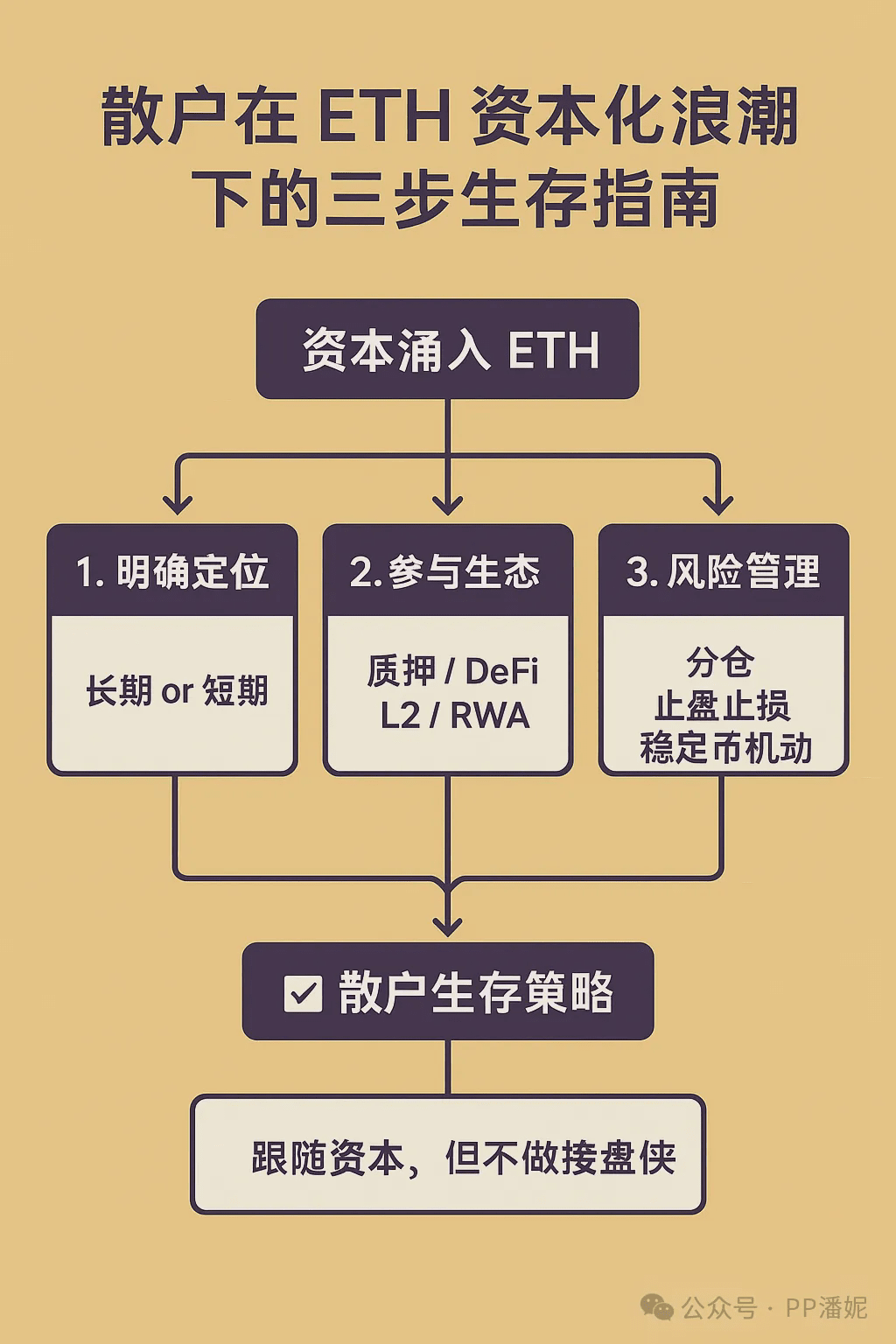Hello everyone, I am Panny.
2025 represents a significant shift for Ethereum. As capital increasingly favors it, ETH has broken a four-year high, approaching $5000. While Bitcoin maintains its foundational advantages, Ethereum's expanding usability, technological advancements, and growing institutional interest are making it a dominant force.
Today's article aims to help everyone clarify the underlying logic, assisting us to understand whether projects align with market trends in our future investments and to manage our position layout effectively!

🏦 Why is capital flowing into ETH instead of BTC?
Institutional logic: ETH possesses yield attributes (Staking), supported by an on-chain economy, and with ETFs just launched, it is highly attractive.
Market landscape: BTC is like 'government bonds', while ETH resembles 'tech stocks', with growth potential favored by capital.
Narrative-driven: Narratives around DeFi, RWA, AI+chain, etc., provide capital with a 'growth story'.
Overall, it can be summarized as:
BTC = digital gold, institutions have already allocated it, more for defense.
ETH = digital economy platform, with richer narratives, applications, and yield attributes, currently in a phase of capital chasing.
👥 The situation faced by retail investors
✅ Opportunity
Follow the capital trend: Stocks supported by institutions often have a stronger safety margin.
Participation in on-chain applications: Retail investors can directly engage with the ecosystem through DeFi, NFTs, L2, etc., rather than just buying spot.
Yield stacking: By staking ETH and participating in LSD (Lido, RocketPool, etc.), one can earn base returns.
⚠️ Risk
Pumping and dumping: Capital often positions itself ahead of time, and retail investors tend to enter at high points.
High volatility: ETH is highly volatile, and emotional trading by retail investors can easily lead to being shaken out.
Ecosystem competition: Although there are many narratives, it does not mean that every application will succeed; retail investors are prone to stepping on mines.
📌 Retail investor strategies
Long-term vs Short-term
If looking long-term: Buy ETH in batches, participate in staking, and gain 'capital dividends'.
If trading short-term: Set profit-taking and stop-loss levels, and do not blindly chase the rise.
Participate in the ecosystem, rather than just trading coins.
ETH is not just about price; it can also yield benefits through staking, lending, L2, and RWA projects.
You can select leading DeFi protocols and stable yield projects, rather than blindly chasing small coins.
Risk management
Capital allocation: Don't go all in on ETH, consider a mix of BTC and ETH, and even keep some stablecoins for flexibility.
Position control: Don't heavily invest just because of 'institutional entry'.
Follow the capital, but don't become the last buyer.
Retail investors should learn to 'follow' rather than 'blindly comply'; institutions have already positioned themselves before the rise, and retail should learn these signals in advance.
💡 Panny's summary:
When capital flows into ETH, our best choice is not to 'blindly chase the rise', but to leverage the trends brought by capital, to position ourselves in advance within the ecosystem, secure long-term holdings, and manage our positions well.



